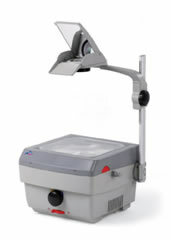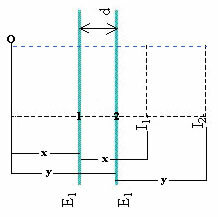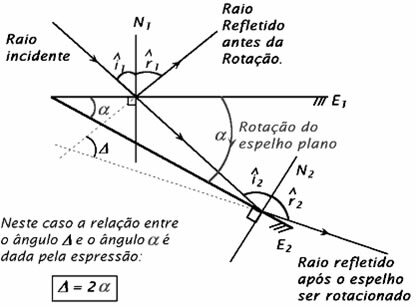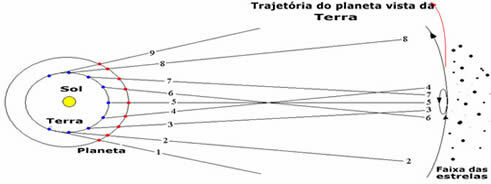When the incidence of light on a surface occurs and it returns to the medium from which it was propagating, we say that the optical reflection phenomenon occurred.
Let it be a plane mirror(s) in which a ray of light RI that forms an angle i with the normal of the mirror is made; the reflected ray RR will form an angle r with the mirror normal

The 1st law of reflection: The normal incident ray (IR) and the reflected ray are cooplanar, that is, they are in the same plane.
The 2nd law of refraction: The angle of incidence is equal to the angle of reflection (r = i)
The image formed by a plane mirror is determined through the extension of the reflected rays.

The image formed can be real or imaginary. If the object is real, the image is virtual; and if the object is virtual, the image is real.

An overhead projector is a device that turns the image of a virtual object into a real image.
The field of vision of a plane mirror is the region of space seen by an observer because of the reflection caused by the mirror. The field of view is limited according to the object's position relative to the mirror. The line that joins the object-image must intersect the mirror so that the object belongs to the observer's field of vision.
Let be a fixed object point and a plane mirror AND1 which is under the abscissa at position 1 generating the image of the object-point at I1. When moving the mirror E1 for position 2, at a distance d, the image will be generated in I2. In the following expression, an expression that relates the distance between I1 Hey2 depending on the distance d.
Do not stop now... There's more after the advertising ;)

Plane mirror translation.
I1I2 = 2y – 2x = 2.(y – x)
As y – x = d
We have to: I1I2 =2.d. Soon we see that the distance of the positions of the images is directly proportional to the double of the distance of distance of the mirrors. Consequently, the image speed is twice the mirror speed (referential – observer).
When rotating a plane mirror (coplanar rotation) the incident ray of a fixed object-point starts to fall in a different position on the same mirror due to the rotation. Two angles will be analyzed and related as shown in the figure.

By Frederico Borges de Almeida
Graduated in Physics
Brazil School Team
Optics - Physics - Brazil School
Would you like to reference this text in a school or academic work? Look:
ALMEIDA, Frederico Borges de. "Reflection of Light in Flat Mirrors"; Brazil School. Available in: https://brasilescola.uol.com.br/fisica/reflexao-luz-espelhos-planos.htm. Accessed on June 28, 2021.


